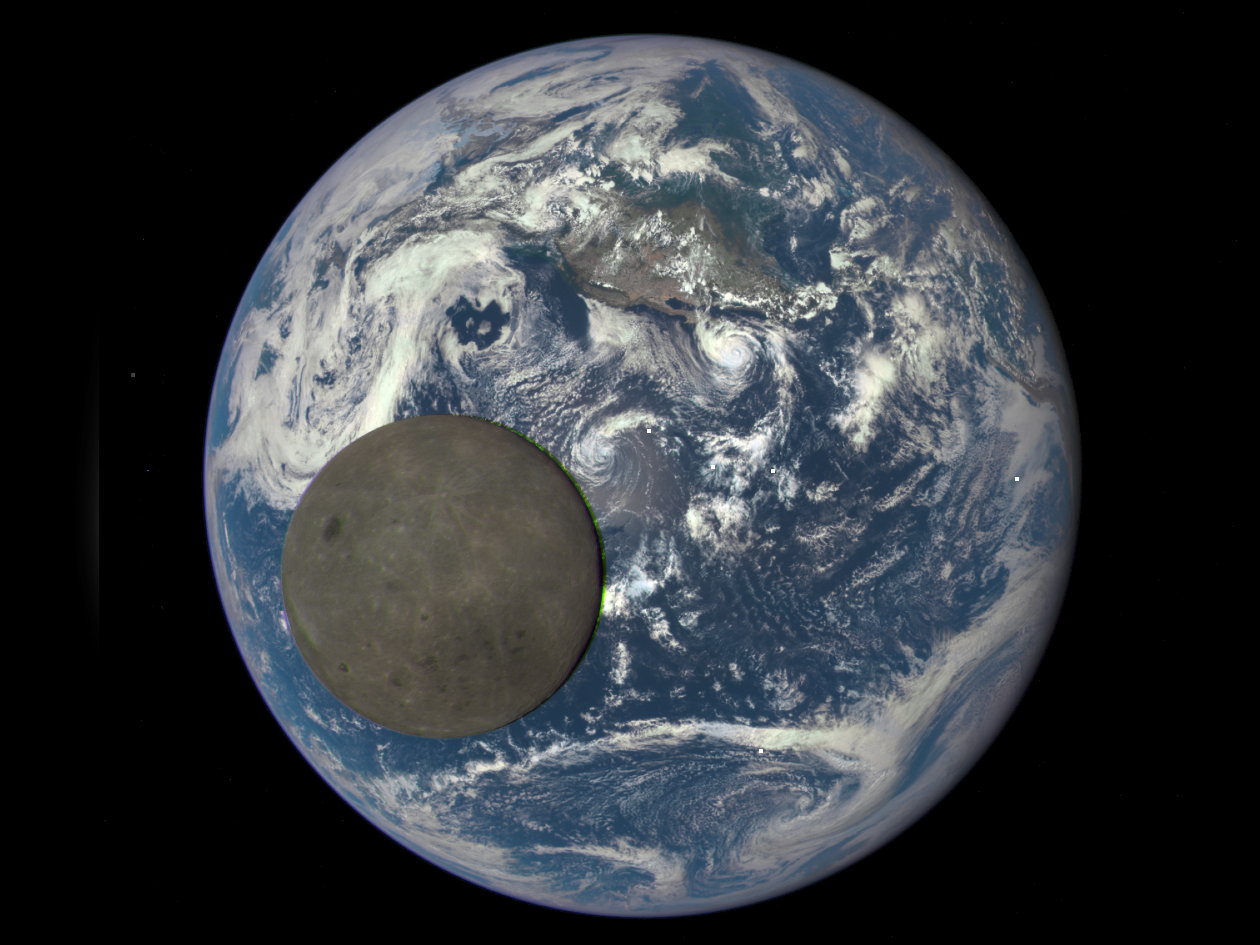
DSCOVR EPIC team
- Earth and the moon both orbit an invisible point just below the planet's surface.
- All planetary systems have this point, called a barycenter, where their mass is perfectly balanced.
- For some systems – like Pluto and its moon, Charon – the barycenter is outside the planet.
- See more stories on Insider's business page.
The moon orbits Earth – right? The answer is actually a little more complicated than that.
The moon is circling a point about 3,000 miles from our planet's center, just below its surface. Earth is wobbling around that point, too, making its own circles.
That spot is the Earth-moon system's center of mass, known as the barycenter. It's the point of an object (or system of them) at which it can be balanced perfectly, with the mass distributed evenly on all sides.
The Earth-moon barycenter doesn't line up exactly with our planet's center. Instead, it's "always just below Earth's surface," as James O'Donoghue, a planetary scientist at the Japanese space agency (JAXA), explained on Twitter.
It's hard to imagine what that looks like without seeing it for yourself. So O'Donoghue made an animation to demonstrate what's going on. It shows how Earth and the moon will move over the next three years.
The distance between Earth and the moon is not to scale in the animation, but O'Donoghue used NASA data, so the positions over time are accurate.
"You can pause the animation on the present date to figure out where the Earth and moon physically are right now," O'Donoghue said.
Every planetary system - including the star or planet that appears to be at the center - orbits an invisible point like this one. Our solar system's barycenter is sometimes inside the sun, sometimes outside of it. Barycenters can help astronomers find hidden planets circling other stars: A star's wobbling motion allows scientists to calculate mass they can't see in a given system.
O'Donoghue made a similar animation of Pluto and its moon, Charon. In this system, the barycenter is always outside of Pluto.
That's because Charon's mass is not that much smaller than Pluto's, so the system's mass is more evenly distributed than Earth and our moon.
Because the barycenter is outside of Pluto, O'Donoghue said, you could actually consider this to be a "double (dwarf-)planet system" rather than a dwarf planet and its moon.
In his free time, O'Donoghue has also made animations to explain why leap years are necessary, why you've probably never seen a model of the solar system to scale, and how incredibly slow the speed of light is.
